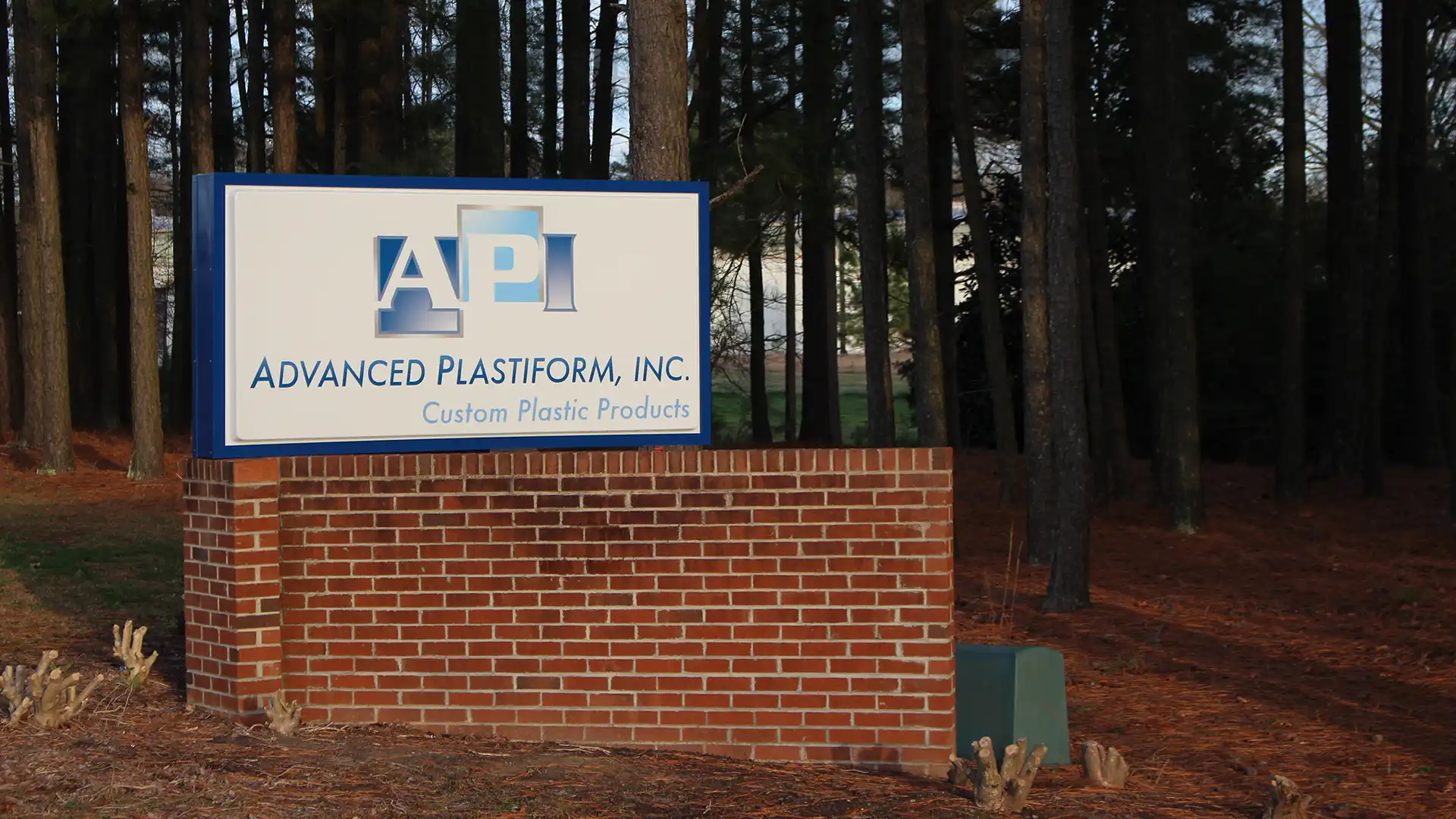Frequently Asked Questions About Pressure Forming Plastic
Learn the Answers to Pressure Forming Plastic FAQs
When it comes to the manufacturing process for parts made out of plastic, there is no one process that is best for every component that is built. That’s why there are many different ways that plastic can be molded through thermoforming.
Thermoforming, the general term used to describe the process of heating and molding plastic sheets to make components for objects and products, is used in many industries such as aerospace, packaging, healthcare, automotive, and more. One of the thermoforming processes that deliver the highest quality of precision is called pressure forming.
Our pressure-forming plastic specialists at Advanced Plastiform, Inc. want to help you, the industry professionals and consumers, learn more about pressure forming by answering these pressure-forming frequently asked questions. From its manufacturing process to how it is used to build parts meaningful to many important industries around the globe, we have your ultimate guide to pressure-forming plastic.
Pressure Forming Plastic FAQs
Q: What is pressure forming?
Answer: Pressure forming is a fast, cost-effective advanced plastic manufacturing technique that uses the combination of air pressure and vacuum technology to build a product or part from a mold. Pressure forming is an enhancement to the method of vacuum forming and is the chosen approach if detailed lettering, logos, fine lines, or textures are important to the finished pieces. If a sharp, clean, precise plastic piece is the intent of the finished product, pressure forming would be the best choice for its manufacturing process.
Q: Is pressure forming the same as vacuum forming?
Answer: Oftentimes, pressure forming and vacuum forming are mistakenly thought to be the same process. However, where vacuum forming draws out air from the mold via a vacuum, pressure forming uses the opposite approach.
Pressure forming uses air pressure to push the heated plastic deep within the underside of the mold to hold the shape and placement of all the components, vacuumed technology pushes the air out of the space, eliminating any potential for air to create bubbles or other imperfections. This ensures there are no moving or interfered parts and that the final executed product is made with precision and quality assurance.
Q: How does pressure forming work?
Answer: In general terms, pressure forming uses both vacuum technology and air pressure to securely press softened plastic firmly against a mold.
Looking at the step-by-step details of pressure forming, the process works like so:
- A single sheet of thermoplastic is clamped into the mechanism within a pressure box.
- Air pressure enters through the pressure box from above, heating and softening the plastic sheet.
- The softened, heated plastic sheet is pressurized into the mold cavity via air pressure.
- The mold cavity vents work as a way to expel and exhaust air, eliminating the possibility of air being trapped within the space. This is done from below by use of vacuum technology.
- The pressure box lifts and once cooled the plastic form is released from the mold.
Q: What materials can be used in pressure forming?
Answer: Some of the commonly used materials for pressure forming are:
- Acrylic
- Acrylonitrile Butadiene Styrene (ABS)
- Acrylic Styrene Acrylonitrile (ASA)
- Conductive Plastics
- High-Density Polyethylene (HDPE)
- High Impact Polystyrene (HIPS)
- High Molecular Weight Polyethylene (HMWPE)
- Polyester Terephthalate Glycol (PETG)
- Polyvinyl Chloride (PC)
- Thermoplastic Olefin (TPO)
Q: What products can be made from pressure forming?
Answer: The ideal applications for manufacturing through the pressure-forming process are any parts, panels, enclosures, and other components that need precision details like sharp corners and crisp, detailed finishes. Often, pressure forming is used in industries like automotive, medical, telecommunication, commercial air, and water filtration, among others.
Examples of the types of specific products created through pressure forming are:
- Car door panels and consoles.
- Seatbelt clips and buckles.
- Luggage and bicycle racks on cars.
- Enclosures for medical equipment.
- Components in medical machines like CT scanners, ultrasounds, and MRIs.
- Enclosures for kiosks and vending machines.
- Technology equipment panels.
- Air and water filtration grids.
- and more!
Q: What are the benefits of pressure forming?
Answer: When compared to other manufacturing processes, using pressure forming to mold product designs for parts and components has many benefits, such as:
- Cost-effective tooling and equipment.
- Fast turnaround times.
- Easy application for making prototypes.
- Can use a large variety of materials to build a vast array of products.
- Sharp, crisp, and well-defined surface detail execution.
- Precision of stylistic features like logos, text, images, and more.
- Advanced capability to execute sharp corners.
- Product updates and redesigns are simple.
- Can produce larger size parts, exceeding 24” X 24”.
- Manufactured to market in as little as 4 to 6 weeks.
- Precise color matching capabilities.
Pressure Forming Plastics with Advanced Plastiform, Inc.
If you think the pressure-forming process is the right choice for the manufacturing of your products or if you have any other questions about plastic pressure forming or other techniques used in thermoforming, contact our experienced team of pressure-forming professionals today. Advanced Plastiform, Inc. serves customers in North Carolina, South Carolina, Maryland, Pennsylvania, Georgia, Tennessee, and Virginia. Call us today at 919-404-2080 or fill out our contact form to get started.

